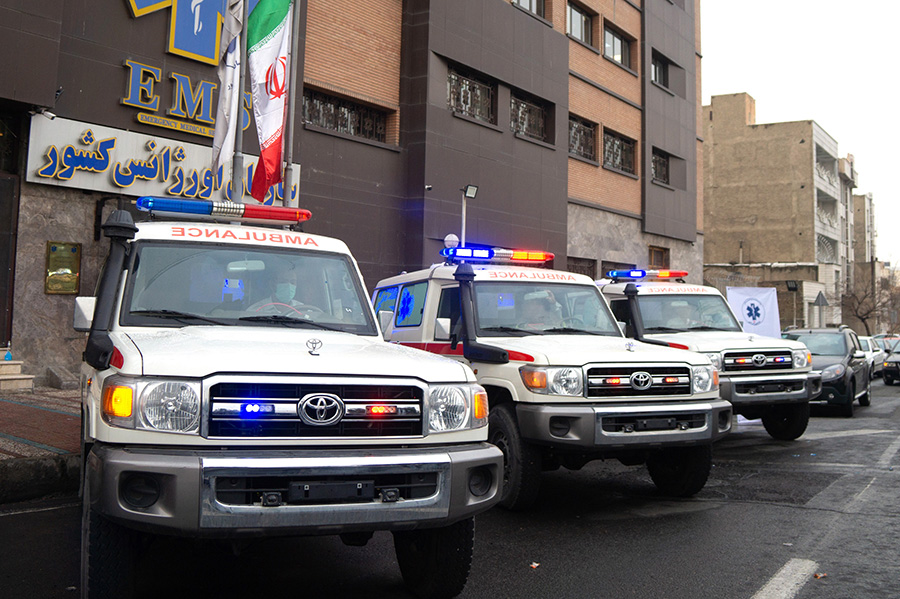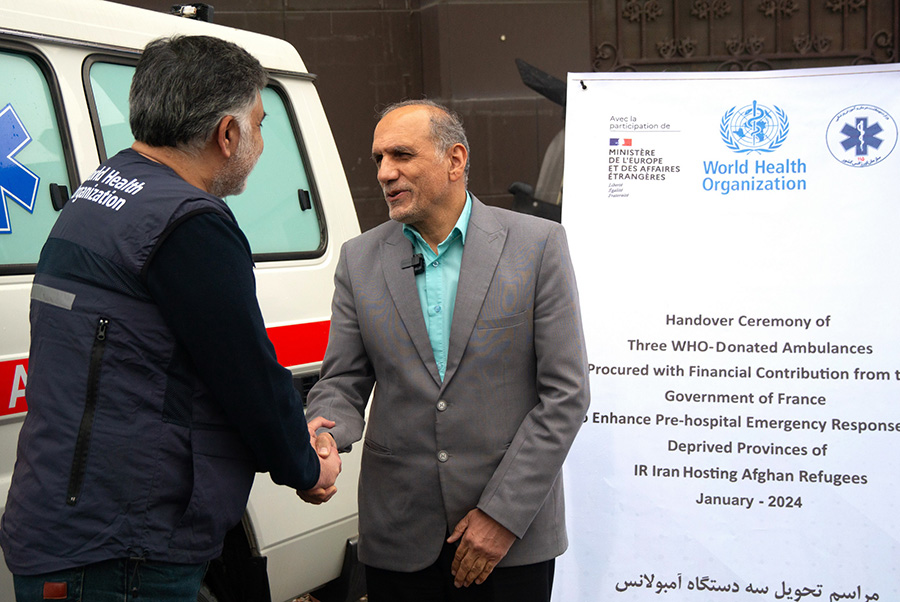 29 January 2024, Tehran, Islamic Republic of Iran – To help boost pre-hospital emergency response capacities in Iranian provinces that host Afghan refugee populations, WHO – with support from the Government of France – has donated 3 hardtop ambulances to the Iranian National Emergency Management Organization (NEMO). NEMO is the main provider of pre-hospital emergency care in the country.
29 January 2024, Tehran, Islamic Republic of Iran – To help boost pre-hospital emergency response capacities in Iranian provinces that host Afghan refugee populations, WHO – with support from the Government of France – has donated 3 hardtop ambulances to the Iranian National Emergency Management Organization (NEMO). NEMO is the main provider of pre-hospital emergency care in the country.
At the handover ceremony, Dr Jafar Miadfar, Head of NEMO, expressed his gratitude to WHO for its continuous efforts to improve pre-hospital emergency services in underprivileged provinces.
Highlighting the pressing need for support, Dr Miadfar underscored the impact of a significant rise in road accidents attributed to unusual movements and the illegal transit of Afghan refugees within the country. He emphasized the vital role of WHO in addressing these challenges and in enhancing emergency medical services nationwide.
Dr Miadfar shed light on the further hurdles faced by NEMO, citing the consequences of sanctions imposed on the Islamic Republic of Iran: “Procurement of essential medical resources, including ambulances and medical equipment, has become a substantial challenge for the organization. Despite these obstacles, we remain hopeful that collaborative efforts with WHO will contribute to overcoming these difficulties and further improve emergency health care in the country.”
 Added Dr Syed Jaffar Hussain, WHO Representative and Head of Mission to the Islamic Republic of Iran: “The anticipated impact of this donation is considerable, with the ambulances expected to provide pre-hospital emergency care for approximately 5500 road traffic victims and other health emergencies patients annually. WHO remains committed to supporting the strengthening of emergency response capacities in the Islamic Republic of Iran, to ensure the well-being of both refugees and host communities.”
Added Dr Syed Jaffar Hussain, WHO Representative and Head of Mission to the Islamic Republic of Iran: “The anticipated impact of this donation is considerable, with the ambulances expected to provide pre-hospital emergency care for approximately 5500 road traffic victims and other health emergencies patients annually. WHO remains committed to supporting the strengthening of emergency response capacities in the Islamic Republic of Iran, to ensure the well-being of both refugees and host communities.”
In line with WHO’s ongoing support to NEMO, the donated ambulances will be allocated to Sistan and Baluchestan province and Kohgiluyeh and Boyer-Ahmad province. These two 2 regions, characterized by high rates of road traffic accidents and limited resources, stand to benefit significantly from improved emergency response capacities.
Having more ambulances in the emergency fleet is expected to substantially reduce response times, leading to a decrease in morbidity and mortality rates in the two 2 provinces.


